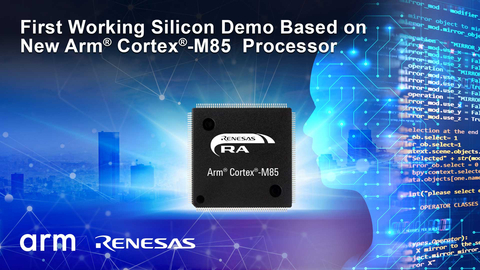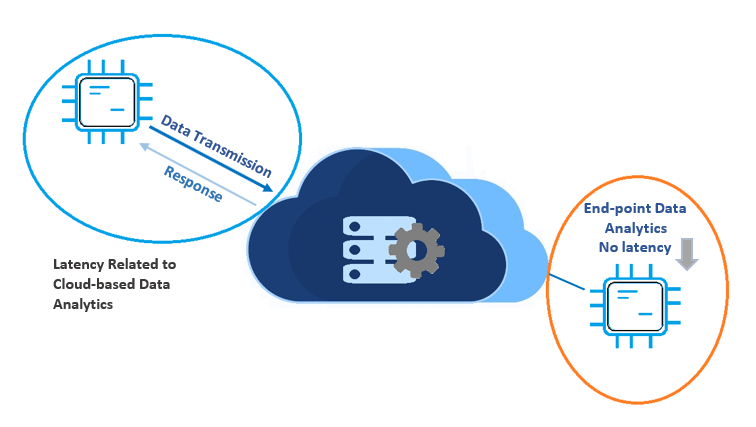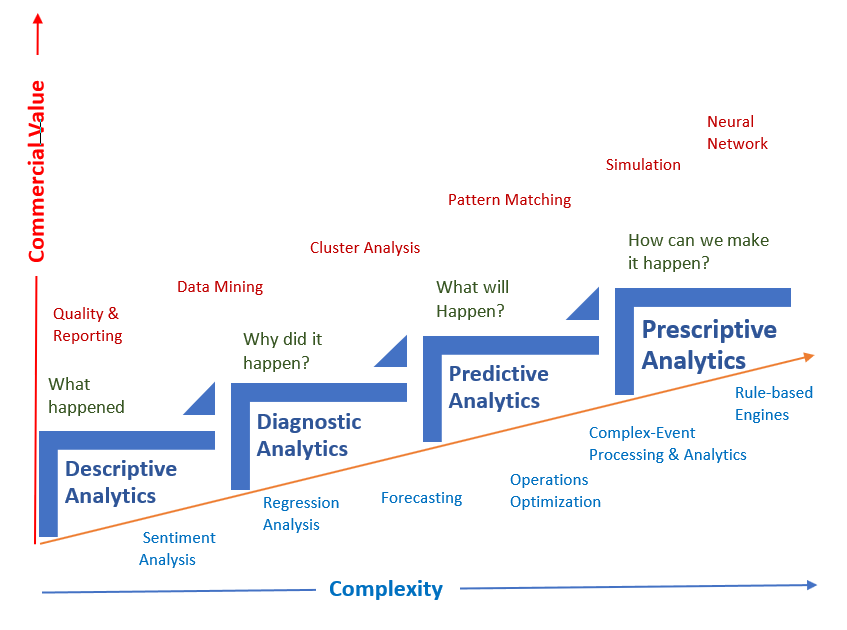Earlyrelease
Regular
MC
Not sure the second part of their tweet is a positive message unless of course you are Puto or live in North K but yes hopefully that is one of many revenue streams to eventuate.
MC


Renesas introduced the RA (Renesas Advanced) Family of Arm Cortex-M based MCUs in October of 2019, entering the general-purpose Arm-Cortex-M market with a robust and feature rich family of flash-based MCUs. In roughly 30 months, Renesas has quickly taken a leadership position, introducing 17 MCU groups encompassing well over 200 individual parts. In addition, Renesas has developed a robust ecosystem of partners providing customers with comprehensive solutions for IoT, AI/ML, industrial automation, medical, building automation, home appliance and multiple other applications.“This demonstration of the first silicon based on our most secure and highest performance Cortex-M processor will showcase the new and exciting applications it will enable and further cements our ongoing close collaboration with Renesas.”
Tweet this


JUST WOW,Awesome reading
ARM battles RISC-V at Renesas
Dr. Sailesh Chittipeddi, Executive Vice President and General Manager of IoT and Infrastructure Business Unit of Renesas Electronics talks to eeNews Europewww.eenewseurope.com
ARM battles RISC-V at Renesas
Interviews | May 27, 2022
Renesas Electronics is looking to catch up in the ARM microcontroller and processor markets, but also looking at the emerging RISC-V cores and new spiking AI accelerators to boost machine learning in the Internet of Things (IoT). At the same time a deal with Arduino aims to drive its chips…
By Nick Flaherty
Share:
Renesas Electronics is looking to catch up in the ARM microcontroller and processor markets, but also looking at the emerging RISC-V cores and new spiking AI accelerators to boost machine learning in the Internet of Things (IoT).
At the same time a deal with Arduino aims to drive its chips into many more areas, says Dr. Sailesh Chittipeddi, Executive Vice President and General Manager of IoT and Infrastructure Business Unit of Renesas Electronics talking to eeNews Europe.
“We’ve been doing a lot over the last several years,” said Chittipeddi. “We are primarily strengthening our microcontroller and microprocessor core capabilities which is the heart and soul of the business. We had fallen behind in the ARM ecosystem and we had a strong push to catch up and we have been. We are a long way from being the leader in this market, but the early indicators are good,” he said.
This desire to catch up is reflected by the showing of the first device using the ARM Cortex-M85 core, the highest performance microcontroller core, at Embedded World next month. But with the recent acquisitions of Dialog Semiconductor in the UK and Celeno in Israel the company is adding more wireless capabilities as well as a whole new FPGA business.
With the future of ARM uncertain with the failed Nvidia bid and now a public offering, the company is also looking at the RISC-V alternative through deals with Andes Technology and SiFive as well as its own internal development.
- Renesas launches 64bit RISC-V microprocessors with ARM compatible pinout
- Renesas to show first ARM M85 silicon
- Renesas boosts entry level ARM controller performance
The company is used to dealing with multiple instruction set architectures. Over the years it has subsumed the Hitachi SuperH and Mitsubishi microcontroller technologies into its own proprietary families alongside a wide range of ARM-based devices.
“So the other side, we’ve introduced our first RISC-V based products as well into the marketplace, which is actually quite exciting from my perspective. And one of the main reasons why we went ahead with the RISC-V products as opposed to test chips, which a lot of people spoke about was really to make sure that we didn’t fall behind,” he said.
The first 32bit cores and devices are targeted at specific applications. “One being the motor controller and the other being the voice based device. So those two are first two products but we will have a portfolio of products which will introduce over the next several years for certain target markets,” he said.
“On the MPU side that was a major reboot because that business is primarily focused on ASICs and high end R-Car devices. So what we did do is we did a major pivot again about roughly about three years ago to go after two categories of products. One is the general purpose microprocessor, which is a 64 bit microprocessor and ranging from the A53 all the way to A72AE [safety critical] cores.
The other side is the embedded AI with DRP dynamically reconfigurable processor for vision solutions. That’s a feedforward neural network rather than a convolutional neural network (CNN), and it offers reasonable 0.5TOPS to 10TOPS at very low power compared to day the Nvidia or Intel equivalent. From my perspective RISC-V will evolve into that areas in the not too distant future.
“So that’s kind of the plan that we have, to evolve that into that landscape,” he said. “At the very low end, we have added an ARM M33 MCU and spiking neural network with BrainChip core licensed for selected applications – we have licensed what we need to license from BrainChip including the software to get the ball rolling.”
“The MPU with RISC-V allows us to go int a new class of applications,” he said. “With RISC-V its all a question of time. I do see ARM now offering custom instructions but I do see the open ecosystem starting to play a role with the geopolitical tensions and that will provide some necessary impetus in certain regions to head in that direction and that will the ecosystem
“To ARM’s credit the ecosystem they have developed is unparalleled and it would be difficult for RISC-V to catch up even with all its strong backing, it’ll take quite a bit of time.”
So Renesas has deals with both Andes and SiFive for RISC-V cores.
“For us to get to the market quickly we went with the Andes cores on the microcontrollers and we partnered with SiFive. It’s not that we are confused, its about the time to market and internally we are developing our own optimised architectures, and the software that needs to be developed we are doing in parallel.”
Security is also vital with the UK as a key design centre. “We are spending a lot of time on security particularly side channel attacks, tamper resistance, going beyond ARM’s TrustZone,” he said. “ At the moment we think our internal efforts are leading with centres in the UK and Japan and obviously edge devices are more vulnerable.”
The recent acquisition of Dialog Semiconductor also brought FPGA technology into the company for the first time.
- Renesas, WolfSSL team for free embedded IoT security license
- Renesas seals $6bn Dialog deal – update
- Renesas enters the FPGA business
“The issues with CPUs is they are single threaded in general and the option to multithread is to add cores. The nice thing about FPGAs is they allow multithreading but with expense and more complex software. So what Dialog did with GreenPak was come up with a configurable engine with 5000 gates or 1000 to 2000 look up tables and drawing 20uA and a cost of 50c or below at high volume so you can see why it is well positioned against a typical multicore CPU. This kind of moves more towards a faster approach in that direction We don’t complete with Intel or AMD or Lattice or Microchip, they have much more horsepower.
The tools are an important element for the ease of development. “With the software we offer both HDL and the more traditional Verilog approaches but the nice thing about GreenPak was the GUI was easy to use and we are taking a very similar approach for the Forge FPGA so its an easy to use GUI that will be very similar for the users of GreenPak to adopt and you can copackage a Forge FPGA with a GreenPak state machine. Down the pike you can see an integrated solution.”
Many of the microcontrollers are built on legacy process technologies that suit the analog and mixed signal peripherals, rather than the leading edge technologies. However the pressure on these legacy process technologies have been one of the key factors in the chip shortage.
“We are well equipped with our foundry partners, especially at 40nm and 25nm which continue to be tight but the bulk of MCU and MPU is internal capacity on 40, 25 and 22nm which is where we will be over the next few years,” he said. “At 28 to 180nm in foundry, that’s the tightest in the world and that will take another couple of years to free up given the lead times for the equipment are stretching to 30 months up from 18 months. It will take quite some time for even the greenfield projects to come on line so there will be glut in capacity in time but the good thing in general is there are corrections in the market but the overall semiconductor consumption is going up massively in automotive and industrial automation and digitalisation, that’s driving a lot of long term growth,” he said.
“We are still a way away from a 3nm world. Our most advanced MPUs are 7/5nm but that’s driven by high end applications largely in the industrial ecosystem. What we are doing for the first time is going to the 1-2GHz range with general purpose MPUs and we will be getting to that level of performance on MCUs but that can be at a node that’s a level behind
He plans to have an MCU running over 1GHz next year but it is the mix of cores that is key as well as connectivity.
“We are moving to a world that’s less CPU or MPU to more AI centric and that will drive changes with intelligence moving to the edge,” he said. “That’s an important trend, driving the need for maximum compute at the lowest power consumption.
“For us one of the weak points was connectivity as we were trying to do it all in-house,” he said. “Dialog gave us the low power for wearables, earbuds and headsets and they had a 2.4GHz solution for low power WiFi. We felt we needed a path to WiFi5 and 6, 6E as we see 6E having a bigger role in industrial hence the Israel deal and that gives us 2.4GHz, 5GHz and 6GHz. With MCUs you need access to the cloud, you need seamless access to the cloud.”
The Arduino deal is also key he says.
“We have formed a strategic partnership with Arduino as they have this base of 30m users and by working with them we think we have a good opportunity for MCUs, sensors, power and connectivity,” he said. “I think Arduino will move into a broader application space by working with an outfit such as us with our base of industrial customers and they have their roadmaps to expand so we have an opportunity to work with them. Even if its hobbyist it’s a pathway to get university students hooked on Arduino today and they will be the engineers tomorrow making the buying decisions.
Not sure if this has been posted today but check this out:
Akida could possibly be involved, not too sure. Thoughts?
Demo at Embedded World
The DA1470x Family will be demonstrated at Embedded World June 21-23, 2022, in Nuremberg, Germany (hall 1; booth 1-234).
Availability
The DA1470x Family consists of four new devices, all of which are in mass production and widely available now.
Hi Shares,
I’m still expecting a ”Big Reveal” when Renesas unveil the product with Akida but given they have their own line of AI products maybe they won’t.
I downloaded the specs however it’s 1023 pages: who would have thought that. Unfortunately I couldn’t copy and paste it here the link to it’s on the webpage you provided.
View attachment 9792
I couldn’t find anything on neural networks or Akida so I’m thinking no which is dissapointing as its on an Arm Cortex M33 which is where I leaning towards Akida being included based on some previous readings.
The videos at the bottom of your links looked ok as well. Key word spotting, ultra low power, learning at the edge:
View attachment 9793
I did manage to find this but there is still no mention of neural network which given it’s a buzz word at the moment I thought they would be promoting it. Not sure what this ”Sensor node controller” is: (sorry for the way the images are split but I couldn’t work out how to copy it any other way).
View attachment 9794
Some of the use cases looked interesting. I’m thinking there should be an NPU instead of a CPU on the diagram if it was Akida but technically I really have no idea:
View attachment 9795
I’m in no way qualified to ogre it so I’ll leave that to Dio.
Good find; we must be getting close and this little family of products would have been awesome!
Edit: I found where I read about Akida being incorporated into an m33 so maybe the nodes are it?
View attachment 9796
I was just expecting a bit more fan-fare! Maybe that’ll occur on the release/display coming up. Fingers crossed!
Thanks so much for looking into it SG, very much appreciated.Hi Shares,
I’m still expecting a ”Big Reveal” when Renesas unveil the product with Akida but given they have their own line of AI products maybe they won’t.
I downloaded the specs however it’s 1023 pages: who would have thought that. Unfortunately I couldn’t copy and paste it here the link to it’s on the webpage you provided.
View attachment 9792
I couldn’t find anything on neural networks or Akida so I’m thinking no which is dissapointing as its on an Arm Cortex M33 which is where I leaning towards Akida being included based on some previous readings.
The videos at the bottom of your links looked ok as well. Key word spotting, ultra low power, learning at the edge:
View attachment 9793
I did manage to find this but there is still no mention of neural network which given it’s a buzz word at the moment I thought they would be promoting it. Not sure what this ”Sensor node controller” is: (sorry for the way the images are split but I couldn’t work out how to copy it any other way).
View attachment 9794
Some of the use cases looked interesting. I’m thinking there should be an NPU instead of a CPU on the diagram if it was Akida but technically I really have no idea:
View attachment 9795
I’m in no way qualified to ogre it so I’ll leave that to Dio.
Good find; we must be getting close and this little family of products would have been awesome!
Edit: I found where I read about Akida being incorporated into an m33 so maybe the nodes are it?
View attachment 9796
I was just expecting a bit more fan-fare! Maybe that’ll occur on the release/display coming up. Fingers crossed!
Thanks so much for looking into it SG, very much appreciated.
Yeah doesn't look too promising considering no mention of an NPU being used.
Oh well, it was worth a shot. You never know, Akida could very well be considered in the future with these new devices.

What’s that supposed to prove?



